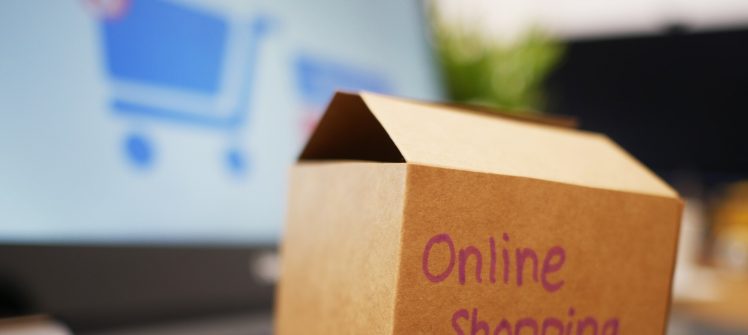Are you looking for a platform to create and run your online store? If so, look no further than Shopify. This powerful e-commerce platform has everything you need to get your business off the ground, including templates, hosting, and more.
In this guide, we will teach you how to use Shopify effectively so that you can make the most of its features. We’ll give you 11 tips covering topics such as setting up your shop, adding products and collections, marketing your shop, and more! Let’s get started.
1. Choose the Correct Store Name
When you create a Shopify account, one of the first things you’ll need to do is choose a name for your store. Selecting a store name may seem small, but it’s essential.
The name you choose will be how customers identify your business online. So it’s necessary that you choose something memorable and reflective of the products or services you offer.
Your store name will become your Shopify URL (e.g., www.mystorename.myshopify.com), so keep that in mind as you decide. Once you’ve chosen a name, you can’t change it later, so take your time and choose wisely!
You also have the option to create a custom domain name for your store. That is a great way to make your store stand out and give it a more professional look.
If you go this route, purchase your domain name through Shopify (or another reputable provider such as Namecheap or GoDaddy). Do this so that it integrates seamlessly with your store.
2. Set Up Your Shop By Watching Tutorials
Now that you have chosen a name for your store, it’s time to start setting it up! The good news is that Shopify makes this process easy with its handy tutorials. These helpful guides will walk you through the basics of setting up your shop, including:
- Creating your account
- Adding custom domain
- Choosing a theme
- Customizing your theme
- Adding products
- Setting up payment methods
- Setting up your data collection
- Customizing your settings
After you’ve completed the tutorials and set up your store, your shop will be ready for customers. Of course, you can always customize it later on down the road. But for now, it’s crucial to get the basics set up so you can start selling as soon as possible.
3. Add Products + Collections by Using Targeted Keywords and Good Quality Photos
Once your shop is set up, it’s time to start adding products! When you are creating product listings, be sure to use targeted keywords so that customers can easily find your products in search engines.
In addition, it’s essential to use high-quality photos that accurately represent the items you are selling. After all, a picture is worth a thousand words, and customers are more likely to purchase appealing products. Finally, be sure to use multiple photos from different angles so that customers can get a good idea of what they are buying.
Here are a few tips for displaying excellent-quality photos:
Use a professional camera or the latest iPhone: This will ensure that your photos are high quality.
Edit your photos: Use photo editing software to improve your photos’ lighting, color, and overall appearance.
Take multiple photos: As we mentioned before, it’s essential to use various images from different angles so that customers can get a good idea of what they are buying.
Use the image size 2048 X 2048: This is Shopify’s optimal size for product photos.
If you have many products, consider creating collections. Doing this is a great way to organize your products and make it easier for customers to find what they want. For example, if you sell clothing, you could create collections for different types of clothing, such as “T-shirts” or “Dresses.”
In addition, you can add product types, tags, and vendors to organize your collections further. This Shopify feature is helpful if you have a large inventory. By managing your products, you will make it easier for customers to find what they are looking for and more likely to purchase.
4. Market Your Shop Through SEO, Email Marketing, and Social Media
Now that you have your shop set up and products added, it’s time to start marketing your business! Thankfully, there are many ways to do this, including:
SEO
Use targeted keywords on your product listings and your shop’s description to help customers find you in search engines. Do your research to find the best keywords for your business.
Email marketing
Collect customer email addresses and send out periodic newsletters or promotions. This marketing method is a great way to keep customers in the loop and encourage them to return to your shop.
Social media
Use social media platforms such as Facebook, Twitter, and Instagram to promote your products and drive traffic to your shop. Post-high-quality photos and engaging descriptions to capture potential customers’ attention.
5. Market Your Shop by Running Ads
Paid ads are a great way to market your shop and drive traffic to your site. Shopify offers a built-in tool called “Google Shopping” that allows you to create ads that will appear in Google search results. That is a perfect way to reach potential customers who are already searching for products like the ones you sell.
A list of the variety of advertising platforms includes:
Facebook Ads
In addition, you can use Facebook Ads to target potential customers on the world’s largest social media platform. Facebook Ads allows you to target customers based on interests, demographics, and behaviors. As a result, the Facebook ad tool is extremely powerful and can help you reach many potential customers.
Instagram Ads
Instagram is another excellent platform for promoting your products. Instagram allows you to use eye-catching photos and videos to show off your products creatively. In addition, you can use Instagram Stories to run promotional campaigns or offer discounts and coupons.
Google Ads
Google Ads is a paid advertising platform that allows you to place ads on Google.com and millions of other websites across the web. Google Ads is a great way to reach potential customers who are already searching for products like the ones you sell.
Bing Ads
Bing Ads is a paid advertising platform that allows you to place ads on Bing.com and millions of other websites across the web. Bing Ads is an excellent alternative to Google ads and is usually less expensive.
6. Use Shopify to Offer Discounts and Run Sales
Shopify offers a built-in ” Discounts ” tool that allows you to provide discounts on your products. You can create discount codes and send them to your customers or post them on your website. Discounts are a great way to encourage customers to purchase your products.
In addition, Shopify also allows you to run sales on your products. Sales are a great way to clear out old inventory or boost profits. You can run time-limited sales or offer discounts on specific products.
7. Use Shopify to Create a Custom Website
Shopify offers a customizable platform that allows you to create a unique website for your business. You can choose from various themes and plugins to create a website perfect for your business. In addition, Shopify also offers a “Shopify Create” service that allows you to create a custom website from scratch.
8. Use Shopify to Sell on Social Media
Shopify offers a built-in tool called “Social Shop” that allows you to sell your products on social media platforms such as Facebook, Instagram, Pinterest, and Twitter. These social media platforms are a great way to reach potential customers who are already using these platforms. Surprisingly, people are more likely to purchase products from businesses they follow on social media.
9. Use Shopify to Sell on Marketplaces
Shopify offers a built-in ” Marketplace ” tool that allows you to sell your products on popular marketplaces such as Amazon, eBay, and Etsy. Sell on these by connecting your Shopify account to these marketplaces. These marketplaces have been growing and getting more and more innovative with time. As a result, millions of people are already using them to purchase products.
10. Use Shopify to Track Your Sales and Inventory
Shopify offers a built-in tool called “Shopify Analytics” that allows you to track your sales and inventory. That is a great way to see how your business is doing and make necessary changes.
You can also use this tool to track your marketing campaigns and see which ones are working and which are not. Using analytics is crucial in today’s business world.
In business, the numbers don’t lie. So don’t tread blindly; use data to make decisions.
11. Use Shopify to Create a Blog for Your Store
Shopify offers a built-in tool called “Shopify Blog” that allows you to create a blog for your business. This blog is a great way to share information about your products, services, and company with potential customers.
A blog is also a great way to build relationships with potential customers. And blogs are a great way to show your company’s personality and increase your site’s targeted traffic.
If you’re not using Shopify, you’re missing out on many great features that can help your business succeed. These are just some of the many ways you can use Shopify to benefit your business. So get started today and see the difference that Shopify can make.
Now That You Know How to Use Shopify, Do You Need a Content Writing Service?
Do you still have questions on how to use Shopify for your business? Do you need content written for your website, blog, or product descriptions?
iWriter is the perfect solution and can help you with all your content needs. With over 1,000s writers in our network, we can provide you with high-quality SEO-optimized content tailored to your needs.
In addition, we offer a variety of different turnaround times and price points to fit any budget. So get started today and see the difference iWriter can make for your business.




Comments are closed.